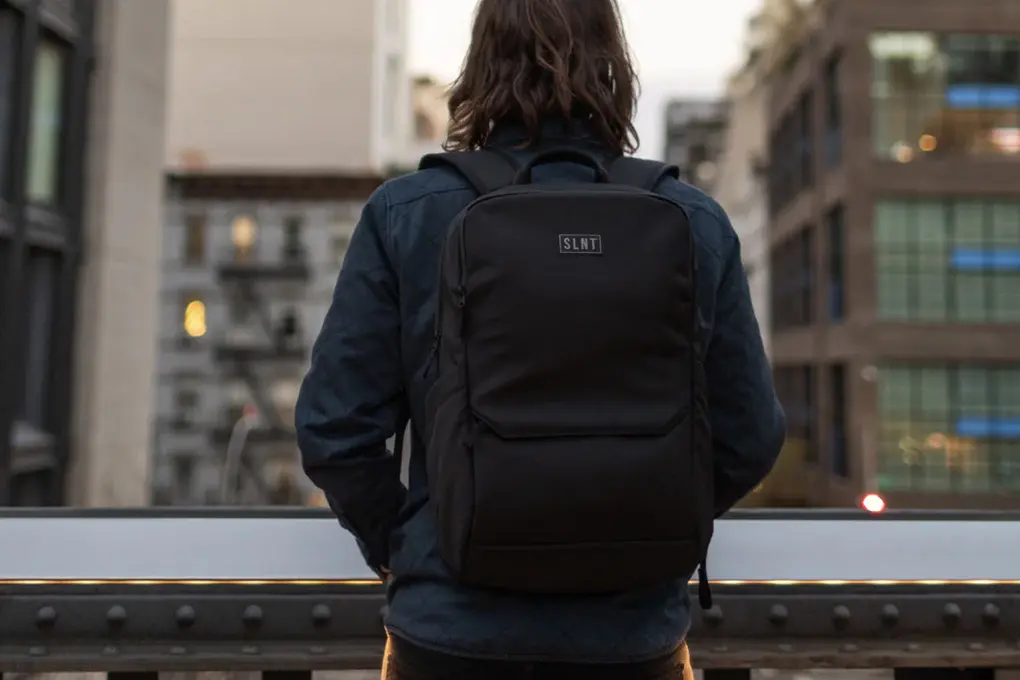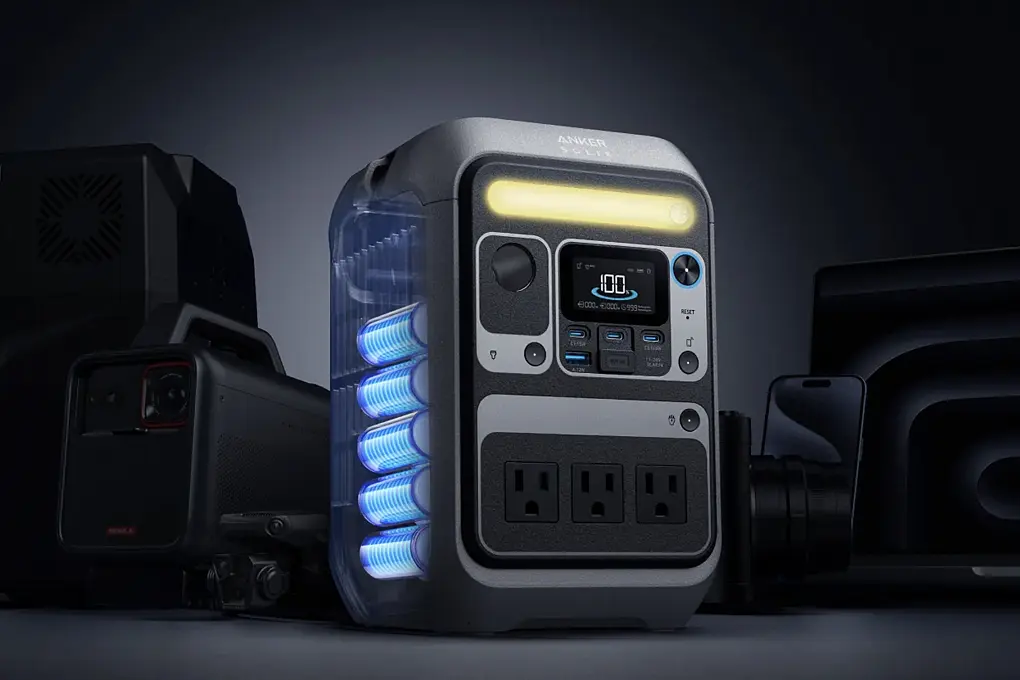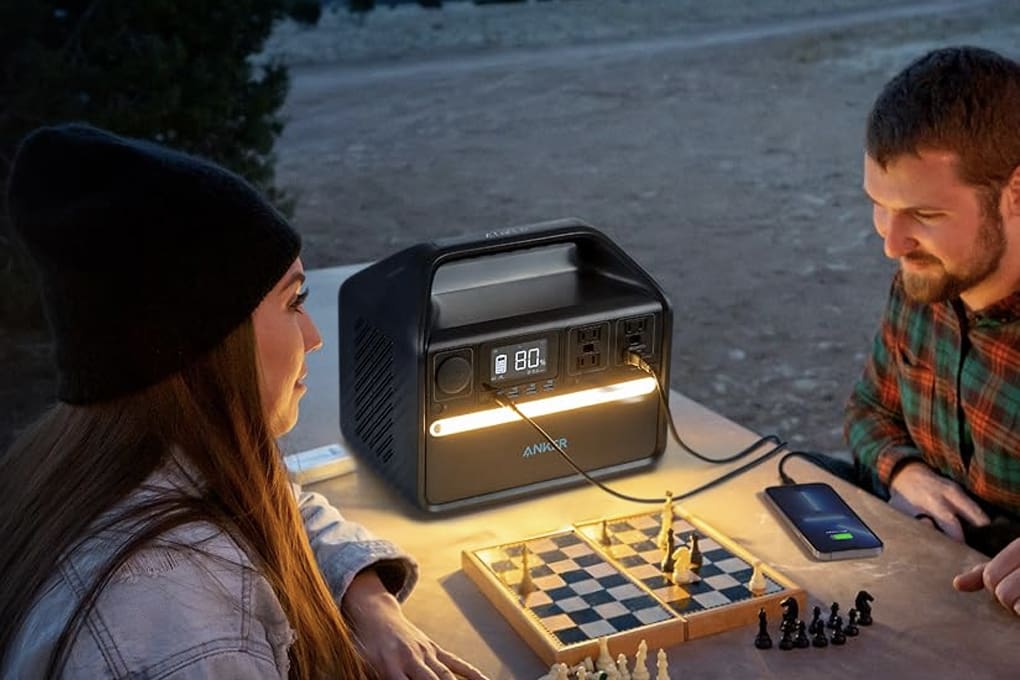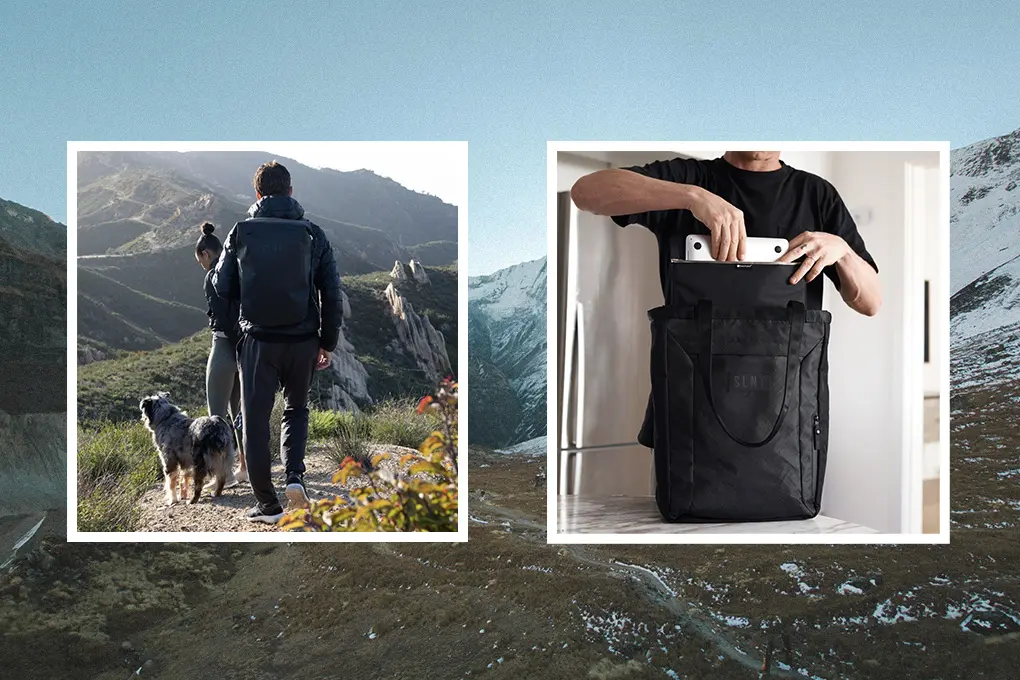If you’re like me and depend on solar generators for off-grid power or emergency preparedness, you’ve probably asked yourself: Would my gear actually survive an EMP? It’s a fair question and one that deserves a real answer, not just marketing claims.
With the growing risk of solar storms and electromagnetic threats, protecting your solar generator has gone from “nice-to-have” to essential. But do Faraday bags actually work? And more importantly, which ones work best?
To find out, I tested two of the top names in EMP protection—SLNT and Mission Darkness. After months of hands-on testing with real equipment and RF detection tools, I’m breaking down exactly how each bag performed when shielding a solar generator. Let’s see which one really held the line.
Table of Contents
- Key Takeaways
- Understanding the EMP Threat to Solar Generators
- Military Standards for EMP Protection: What MIL-STD-188-125 Actually Means
- Our Testing Methodology: Keeping It Real
- Head-to-Head Results: SLNT vs. Mission Darkness
- The Price Factor: Value for Protection
- Practical Insights from Real-World Use
- So, Do Faraday Bags Really Work for Solar Generators?
- Final Recommendations
- Additional Protection Measures
- Conclusion: Insurance for Critical Power
- Frequently Asked Questions
Key Takeaways
- EMPs are a real risk to solar generators, especially their charge controllers, inverters, and battery systems—not just the panels themselves.
- SLNT and Mission Darkness bags both meet lab-tested EMP shielding standards, using materials compliant with MIL-STD-188-125.
- Hands-on testing confirmed both bags blocked RF signals and protected real solar generators from performance loss.
- Mission Darkness had slightly stronger attenuation (88–92dB vs. 80–85dB), especially at lower frequencies, but costs significantly more.
- SLNT’s bag is lighter, easier to use, and ideal for frequent access without sacrificing core protection.
- Proper closure technique is critical as even a small gap compromises shielding. Practice sealing your bag correctly.
A tiered protection strategy, with backups stored in Faraday bags and essentials ready for use, offers the most resilience.
Understanding the EMP Threat to Solar Generators
Before jumping into test results, it’s worth knowing what makes solar generators so vulnerable and why EMP protection matters.
What Is an EMP and Why It Matters
An electromagnetic pulse (EMP) is a sudden burst of energy that can fry electronic circuits. It can come from:
- Solar events like coronal mass ejections (CMEs), which disrupt Earth’s magnetic field and induce damaging currents in power systems.
- Man-made sources, such as nuclear detonations, generate the highly destructive E1 pulse—capable of delivering up to 50,000 volts in microseconds.
As the Department of Homeland Security puts it, EMPs “could disrupt the electrical grid and potentially damage electronics” across critical infrastructure.
Why Solar Generators Are at Risk
While panels themselves are fairly resilient, the real threat lies in the delicate internal components of solar generators:
| Component | Vulnerability | Potential Impact |
| Charge Controllers | Microelectronics | Batteries won’t charge |
| Inverters | Complex circuitry | No AC power output |
| Battery Management System (BMS) | Digital control systems | Permanent battery damage |
| Display Panels | LCD/LED | Loss of monitoring and control |
| I/O Ports | Open connections | Easy entry for voltage surges |
Faraday bags aim to block these threats by creating a sealed electromagnetic barrier, shielding sensitive electronics from both natural and man-made pulses.
Military Standards for EMP Protection: What MIL-STD-188-125 Actually Means
Both SLNT and Mission Darkness emphasize compliance with MIL-STD-188-125, a military standard created to protect critical government infrastructure from high-altitude EMP (HEMP) attacks.
Originally designed for fixed military installations, the standard outlines minimum shielding requirements, testing protocols, and pass/fail thresholds for EMP protection—not consumer gear.
| Aspect | Meaning |
| Shielding Requirements | Specifies minimum attenuation across bands |
| Testing Protocols | Details measurement methods |
| Certification Criteria | Defines what counts as passing |
| Verification Procedures | Ensures lasting protection after setup |
When brands claim compliance, they usually mean their materials were tested to parts of the standard—not that the full bag or insert has been militarily certified.
Both companies use Keystone Compliance for third-party lab testing. SLNT reports a 100,000:1 signal reduction across 1–40GHz, while Mission Darkness offers similar lab-certified results. That’s why I combined these lab specs with hands-on testing—to see how each product performs in the real world.
Take a look at Batten Emergency’s power generators and backup power systems.
Our Testing Methodology: Keeping It Real
Without access to nuclear weapons or military testing facilities, I needed to develop a practical approach to evaluate these products.
Many reviews simply repeat manufacturer claims or conduct basic phone-in-bag tests, but I wanted to go deeper with a methodology that would provide meaningful results for fellow preparedness enthusiasts.
Equipment and Materials Used
For my testing, I assembled the following equipment:
- Two identical Bluetti EB70S solar generators (1000W/716Wh) for direct comparison
- SLNT Generator EMP-Proof Bag and Mission Darkness Revelation Generator Bag
- HackRF One software-defined radio with spectrum analyzer software
- Professional-grade RF signal generator capable of producing controlled bursts
- Various smartphones and wireless devices for signal penetration testing
- Digital wattmeter and resistive load bank for performance verification
The Bluetti EB70S was an ideal test subject because it represents a popular mid-range solar generator with the sensitive electronics common to most units on the market. Using identical units allowed me to eliminate any variables that might affect the comparison between protection bags.
Test Procedure: A Multi-Faceted Approach
I used four complementary methods to evaluate both the technical shielding and real-world usability of each Faraday bag:
- RF Signal Attenuation Testing: I generated RF bursts from 10MHz to 2.4GHz and used a spectrum analyzer to measure how much signal each bag blocked—covering both EMP-relevant frequencies and everyday wireless signals.
- Real-World Signal Blocking: I sealed active smartphones, GPS trackers, and Bluetooth devices inside the bags, then tried to connect or locate them. This confirmed lab results with practical, real-world validation.
- Power Equipment Functionality: I charged two Bluetti units, placed one in each bag during RF exposure, then performed identical load tests. This helped detect any subtle post-exposure performance changes.
- Usability Assessment: I tested how easily each bag handled generator placement, closure reliability, and repeated use—an often overlooked but essential factor for real-world scenarios.
While not a nuclear-level test, this method provided solid data on shielding performance and real-world practicality.
Head-to-Head Results: SLNT vs. Mission Darkness
After extensive testing using identical procedures and equipment, here’s how the SLNT Generator EMP-Proof Bag and the Mission Darkness Revelation Generator Bag compare across key categories:
Signal Blocking Effectiveness
Both bags provided outstanding shielding, but there were slight performance differences worth noting:
- SLNT Generator EMP-Proof Bag: Delivered 80–85dB attenuation across most frequencies—enough to block 99.999% of signals. I observed minor leakage below 30MHz, but phones inside were unreachable, and WiFi, GPS, and Bluetooth were fully blocked.
- Mission Darkness Revelation Bag: Achieved 88–92dB attenuation, with stronger consistency across all bands—including low-frequency ranges. All devices placed inside lost signal completely, even at the fringe frequencies.
Winner: Mission Darkness, by a small margin due to its better low-frequency coverage, though both provide strong EMP shielding in real-world scenarios.
Construction Quality and Durability
Both bags are rugged but differ in build and handling:
- SLNT: Lightweight (2.4 lbs), flexible, and easier to fold and carry. Features a water-resistant shell, reinforced seams, and durable handles. Great for storage and mobility.
- Mission Darkness: Built with heavy-duty ballistic nylon and triple TitanRF™ fabric layers. Includes a removable aluminum base plate and full wraparound handles. At 4.6 lbs, it’s more robust but less portable.
Winner: Tie. Choose SLNT for ease and portability; go with Mission Darkness if you want rugged, tactical-grade build quality.
Ease of Use and Practicality
Closure systems and day-to-day handling set these two bags apart:
- SLNT: Easier to maneuver, with a simple fold-and-seal velcro closure that takes under 20 seconds. The spacious interior fit my generator and accessories comfortably and folds flat when not in use.
- Mission Darkness: Holds its shape well for loading, but its closure system takes longer, about 25–30 seconds, due to the need for exact folding, pressure sealing, and buckle strapping. The rigid base helps with structure but adds bulk.
Winner: SLNT. Its lighter weight and quicker closure make it better for frequent access.
Solar Generator Protection After Simulated RF Exposure
To test real-world protection, I charged and sealed two identical Bluetti EB70S units in each bag, exposed them to RF, then conducted full load tests.
| Test Parameter | SLNT Bag | Mission Darkness Bag |
| Display Functionality | Normal | Normal |
| Battery Level | 100% | 100% |
| AC Output Stability | Stable at 1000W | Stable at 1000W |
| USB/DC Outputs | All functional | All functional |
| Temperature | Normal range | Normal range |
| BMS Performance | Normal | Normal |
Both units worked perfectly post-test, showing no signs of damage or degradation.
Winner: Tie. Both bags fully protected the generators during high-RF exposure.
The Price Factor: Value for Protection
Let’s take a look at the value you get for the money you’re spending.
| Product | Price | Protection Level | Key Features |
| SLNT Generator EMP-Proof Bag | $239.95 | 80–85dB avg | Lightweight, flexible, water-resistant |
| Mission Darkness Revelation | $580.00 | 88–92dB avg | Rugged build, triple-layer shielding, base plate |
Protection comes at a cost—so which bag offers better value for your dollar? Here’s how they compare: Although the Mission Darkness bag offers higher attenuation and rugged construction, it’s more than twice the price of the SLNT option.
That said, both bags are protecting gear often worth $500 to $2000+, so even the pricier option still serves as a cost-effective safeguard against EMP-related loss. For most users, the decision will come down to budget, weight tolerance, and how rugged your storage needs are.
Practical Insights from Real-World Use

Beyond lab results, daily use over several months revealed some important functional differences between the two bags:
SLNT Generator EMP-Proof Bag
The SLNT bag’s lightweight and flexible construction made it much easier to work with, especially when packing and unpacking gear in tight or uneven spaces.
During a field test with my Bluetti EB70S, I was able to quickly insert the unit along with cables, a foldable panel controller, and even a compact light—all without straining the seams or the roll-top.
The material held up well through repeated transport, showing no noticeable wear even after exposure to light rain and rough handling.
However, the closure system demands precision. To ensure a proper electromagnetic seal, I found that rolling it tightly three full times and pressing firmly along the folded edge before applying the hook-and-loop strip was the most reliable method.
Mission Darkness Revelation EMP Shield for Generators
The Revelation bag feels like it was built for military field deployments. The heavier ballistic nylon exterior and rigid base plate gave me confidence when loading it with larger gear, including my Jackery Explorer and backup radios.
It held shape even when stored upright in a garage for weeks, and the weight distribution through the wraparound straps made it surprisingly comfortable to move despite the added bulk.
I particularly appreciated the external accessory compartments, which made it easy to stash spare fuses, cords, and a multimeter, all items you may want handy but still shielded.
The closure process took longer and required careful folding and strapping, but the end result felt ultra-secure—ideal for long-term storage rather than regular access.
Testing in Adverse Conditions
Both bags were subjected to casual real-world challenges: dust, dirt, light rainfall, and cold-weather handling.
- SLNT: Stayed easy to work with in colder temperatures, maintaining flexibility even below freezing. Light moisture on the closure didn’t impact its performance when sealed properly.
- Mission Darkness: The bag stiffened slightly in cold conditions, making it harder to get a perfect seal quickly. However, it performed reliably with dirt and grit near the closure area, thanks to its thicker roll-top and robust Velcro/buckle combo.
If you live in a colder climate or plan to frequently move your generator in and out of storage, the SLNT bag might offer more day-to-day practicality. For harsh environments, long-term protection, or heavy-duty gear setups, the Mission Darkness bag delivers unmatched structural support and shielding confidence.
So, Do Faraday Bags Really Work for Solar Generators?
After months of hands-on testing with real solar generators, I can confidently say: yes, quality Faraday bags do provide reliable protection against electromagnetic threats.
Here’s how the two top-tier models stacked up:
| Test | SLNT Result | Mission Darkness Result | Protection Adequate? |
| RF Attenuation | 80–85dB | 88–92dB | Yes — both exceed standards |
| Cell Signal Blocking | Complete | Complete | Yes |
| WiFi/Bluetooth Blocking | Complete | Complete | Yes |
| GPS Signal Blocking | Complete | Complete | Yes |
| Generator Function After Test | 100% Normal | 100% Normal | Yes |
Both bags delivered exceptional shielding and preserved generator function after simulated RF exposure. But there are three important takeaways:
- Not All Faraday Bags Are Equal: The SLNT and Mission Darkness models represent the premium end of the spectrum with verified lab performance. Cheaper alternatives often lack meaningful shielding—some don’t block signals at all.
- Closure Technique Is Critical: Even a small gap can compromise protection. I tested this myself—just a quarter-inch opening allowed signal penetration. Learn your bag’s closure method and practice until it’s second nature.
- Protection Is Only Useful If In Use: Gear can’t be shielded if it’s not inside the bag. That’s why I recommend a tiered setup: use your primary gear regularly, but keep backups sealed and ready. It’s the smart way to ensure you’re covered when it counts.
In short, yes—Faraday bags work. But only when you choose the right one, close it properly, and plan your use around real-world emergencies.
Final Recommendations
After hands-on testing and real-world evaluation, here’s how I’d recommend these two EMP protection bags depending on your needs:
Best for Extreme Scenarios and Long-Term Storage: Mission Darkness Revelation Generator Bag
For those preparing for worst-case scenarios and storing backup systems long-term, the Mission Darkness bag stands out. Its slightly stronger low-frequency attenuation, rugged construction, and built-in structure offer top-tier protection. It’s overbuilt for durability and feels like it’s made for serious contingency planning.
Ideal for: Long-term preppers, off-grid storage, or users in high-risk regions who want the highest available level of EMP shielding.
Best for Real-World Portability and Versatile Use: SLNT Generator EMP-Proof Bag
While the SLNT bag delivers slightly lower attenuation on paper, its real-world usability is hard to beat. It’s significantly lighter, easier to seal correctly, and more adaptable to different gear setups, making it the bag I found myself reaching for most often during regular use.
The protection is still well above EMP safety thresholds, and its flexible design makes it a better fit for users who move between storage and deployment.
Ideal for: Preparedness-minded individuals who regularly use or rotate their gear, outdoor enthusiasts, or anyone wanting a balance of strong protection and everyday practicality.
Additional Protection Measures
To maximize your solar generator’s chances of surviving an EMP event, consider these additional precautions as part of a comprehensive protection strategy:
- Use a Tiered Storage Strategy: Keep your primary solar generator ready for use, but store a backup system—including cables and accessories—in Faraday protection as an insurance policy.
- Split Up Your Gear: Don’t store everything in one bag. Distributing components across multiple Faraday bags increases the odds that at least some equipment will survive.
- Include Printed Documentation: Store physical copies of instructions, wiring diagrams, and troubleshooting guides with your protected gear so you can operate it even without digital access.
- Practice Setup Regularly: Run through setup and operation in different conditions (e.g., in the dark or rain) to build muscle memory and confidence for real-world emergencies.
- Protect Spare Components Separately: Keep extras like charge controllers, inverters, cables, and fuses in smaller Faraday bags so you can repair or rebuild if your main system is hit.
- Inspect and Test Your Protection: Check bags monthly for damage, run simple signal-blocking tests quarterly, and fully test gear and battery charge levels every six months.
Conclusion: Insurance for Critical Power
After months of testing under realistic conditions, both the SLNT Generator EMP-Proof Bag and the Mission Darkness Revelation Generator Bag proved they can reliably protect solar generators from electromagnetic threats.
Whether you’re preparing for natural solar storms or more extreme man-made events, quality Faraday bags are effective, practical tools that can preserve your most critical power assets.
Mission Darkness offers top-tier attenuation and structural protection, making it ideal for long-term storage and harsh environments. Meanwhile, the SLNT bag delivers impressive shielding with greater portability and ease of use, better suited for gear that sees more regular access.
Ultimately, both bags exceeded expectations, but the right choice depends on your priorities. For maximum protection, go with Mission Darkness. For everyday use with strong defense, SLNT is the better fit. Visit Batten Emergency for a multitude of emergency preparedness resources and products.
Frequently Asked Questions
What Size Solar Generators Fit in These Bags?
Both bags can hold mid-size solar generators like the Bluetti EB70S. Mission Darkness can also handle larger models like the Jackery Explorer 3000.
Do Faraday Bags Block All Types of Signals?
Yes, both models tested blocked cell, GPS, WiFi, Bluetooth, and RF signals across low MHz to 2.4GHz+ frequency bands.
Can I Use the SLNT Bag for Everyday Gear?
Absolutely. Its flexible, lightweight design makes it a practical option for rotating gear, traveling, or frequent storage access.
Will the Bags Still Work If Exposed to Weather?
Both bags offer water resistance, but only Mission Darkness includes a rugged base plate for extra structure in damp or dusty conditions.
Should I Store Cables and Accessories Separately?
Yes. Keeping sensitive cables, charge controllers, or inverters in smaller Faraday bags increases redundancy and improves overall protection.
Additional Resources
- Learn more about long-term power outage preparation
- Explore our guide to off-grid power solutions
- Check out our Jackery solar generator review
Sources
- DHS Combats Potential Electromagnetic Pulse (EMP) Attack | Homeland Security
- Will an EMP Destroy a Solar Generator? – GoSun
- C:\KROHN3\MIL-STD\NEWMIL\10-1DOC.WP6
- Regulatory Compliance Testing | Applus+ Keystone
- EMP-proof Bag for Generators – Medium – SLNT®
- Mission Darkness™ Revelation EMP Shield for Generators – MOS Equipment




